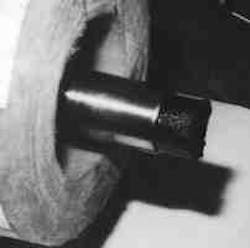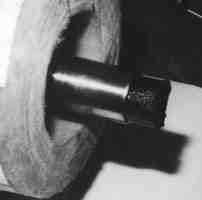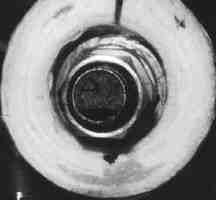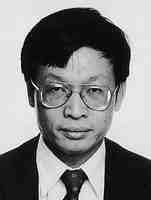System developed to predict waxy crude's breakaway yield stress
T.M. Williams, J.J.C. Hsu, H.L. PattersonBreakaway yield stress (BAYS) was measured on waxy crude oil from the South China Sea to help develop appropriate design specifications for the HZ field subsea production system there.
Texaco Inc.
Houston
The measured BAYS at seabed temperature indicated that if production were interrupted and the crude in the pipeline cooled to seabed temperature, restart pressure would exceed the pressure rating of the originally planned pipeline.
Texaco Inc. has designed a system to measure the BAYS of stock tank and live crude oils at selected temperatures. The cooling rate of the oil can be controlled and measurement of BAYS at the selected temperatures delayed to best model field conditions.
Design for restart
The BAYS of a given crude oil can affect the economics of a production system. Accurate knowledge of the BAYS will allow the best spacing of emergency cleanout ports or other system modifications for optimum system restart design.
Crude oil produced in many fields has a pour point greater than the ambient temperatures the crude oil may encounter. During normal production, the oil temperature may remain greater than its pour point.
During shutdowns, however, the oil may cool to less than the pour point and gel. If the shutdown continues, the BAYS of the oil may continue to increase even after the oil gels.
Accurate measurement of BAYS of many waxy crude oils is necessary to permit decisions during system design and development of procedures to be followed so that production can be restarted after planned and unplanned shutdowns.
Measuring the BAYS of an oil only requires cooling of an oil sample in a pipe to the desired temperature and measuring the amount of pressure required to move the oil in the pipe.
Obtaining a measurement sufficiently accurate for planning a production system, however, demands consideration of the cooling rate of the oil, the pipe material, the temperature, and the length of time after cooling before measurement is made.
If the yield stress of live oil is to be determined, the measurement system must be designed to contain the live oil at a high enough temperature to melt all wax particles and to be filled without contaminating the oil.
Measurement apparatus
Texaco's BAYS measurement apparatus consists of a liquid bath chiller, constant-pressure pump, computer, and a tube to contain the oil to be tested.
The tube used in a test may be a 1/4 or 1-in. OD tube.
For some oils, measuring the yield stress with a 1/4 in. tube will produce the same result as a larger tube. For other oils, this small tube may result in a higher measured yield stress than would be encountered in a 1-in. or larger pipe.1 For most oils, Texaco employs a 1-in. tube.
The 5-ft long, 1-in. stainless steel tube is surrounded with a jacket through which a water/antifreeze mixture is circulated. (The 1/4-in. tube is 3 ft long and immersed in a temperature controlled bath.)
The tube is connected to a differential-pressure meter (Fig. 1 [12954 bytes]). The lines that connected the test tube to the differential-pressure meter may be either 1/8 or 1/4-in. tubes.
For oils with pour points greater than 75° F., heating tape is wrapped around various tubes to keep the oil in those tubes liquid so that the measured differential pressure is the actual differential pressure across the test tube.
A line is also connected from an oil cylinder to the differential-pressure meter. The other end of the cylinder is connected to a constant-pressure pump which will keep the oil under test at a constant pressure while it is cooled.
The system is cleaned and evacuated to prepare it for the oil. Then oil is pumped into the system and at least 150 ml is left in the oil cylinder.
The pressure on the system is then increased to the desired test pressure. If a live oil is being tested, sufficient oil is bled from the system to remove the oil that flashed as it was introduced into the evacuated system.
The test-system pressure is usually less than 40 psi for stock-tank oils and about 100 psi greater than the bubble point for live oils.
The oil is then heated to the desired starting temperature. This temperature should be at least 10° F. greater than the cloud point of the oil to erase any thermal history in the oil.
The oil is cooled over a period of several hours to the desired test temperature. The exact cooling rate and final temperature are selected based on actual field conditions, computer simulations of field conditions, or "best guess" as to what the actual conditions will be.
The pipeline diameter, insulation, if present, and material surrounding the pipe will be used to determine cooling rate. The final temperature will be the lowest ambient temperature of the field where the pipeline is to be installed.
When the desired temperature is reached, the oil may be held at that temperature for several hours or several days, or the measurement may be made immediately.
For the measurement, the differential-pressure meter's bypass valve is closed.
Then the volume on the low-pressure side of the differential-pressure meter is increased slowly by increasing the volume in the screw piston pump. If the oil is gelled, the reading on the differential pressure meter will increase.
As the volume is increased, the differential pressure will increase slowly and then begin to drop. The maximum pressure is the pressure required to start the oil moving in the test tube.
Pressure equation
The differential pressure is related to the BAYS by the following equation:
ty = DPd/4L
where:
ty = BAYS psi
D = Tube ID
Pd = Differential pressure, psi
L = Tube length, in same units as tube diameter
The BAYS of a mixture containing equal weights of HZ 32-2 and HZ 32-3 oils was measured before Texaco built the current system. The system used was an open, 1-in. tube; the pressure was therefore ambient.
In this system, the hot oil was poured into the test tube which had one end capped and had a tee on the other end.
Through the end of the tee was inserted a thermocouple which measured the temperature at the radial center of the tube. To the branch of the tee was connected a short piece of 1-in. tubing to apply a small head pressure to the oil in the test tube.
Heating tape was wrapped around the short tube to keep the oil in it liquid. The capped end of the test tube was slightly lower than the open end.
Oil was added to the short tube as the oil in the test tube cooled and contracted.
To measure the BAYS, the cap and thermocouple were removed. A low-volume pump and pressure meter were installed on one end of the tube. A paraffin oil was slowly pumped into the test section and the pressure required to move the gelled oil recorded.
HZ 32 BAYS measurement
Accurate measurement of the BAYS of HZ 32 oils was needed so that informed decisions could be made about actions needed to restart production after an extended shutdown of the pipeline when it contains oil.
Tests were made using a mixture of HZ 32-2 and HZ 32-3 oils. One test was made with pure oil; a second test was made with 5% water and demulsifier.
Previous studies have shown that the HZ 32 oils easily form an emulsion with water. To determine how the yield stress changes with water, Texaco made a mixture of 5% water and 95% of the fluid used in the previous test, then added a demulsifier.
The combination of the demulsifier and the starting temperature of the test broke the emulsion, creating free water that settled to the bottom of the test pipe.
The temperature profile was selected to be similar to a temperature profile from a pipeline computer simulation. Texaco selected one of the faster temperature decays in this simulation. A plot of temperature vs. time of the fluid at the selected node is shown in Fig. 2 [13464 bytes].
The oil near the wall of the pipe quickly cools until it is near the temperature of the sea water. The mid-layer of the oil cools more slowly and the oil near the center of the pipe cools most slowly.
The test curve follows the shape of the core and mid-layer cooling rates after an accelerated cooling rate during the first 6 hr.
The temperature program for the tests is shown in Table 1 [5267 bytes].
The oil was heated to 190° F. and cooled to 60° F. over 48 hr. This is shown as the experimental curve in Fig. 2 [13464 bytes].
During the cooldown period, the temperature of the coolant and the temperature at the center of the test fluid were monitored. The difference in temperatures was usually less then 0.25° F.
For both samples, equal weights of heated HZ 32-2 and HZ 32-3 oils were mixed. This oil has a pour point greater than 90° F., so it had to be heated to be poured in the BAYS test apparatus.
The heated oil was poured into the system that had been heated to 190° F. After the system was stabilized, cooling at the programmed rate began.
The test pipe was kept at ambient pressure during the entire test. It was slightly inclined from horizontal to prevent large gas bubbles from accumulating in the pipe.
For the second test, water (5 vol %) was added to the oil mixture described and mixed with the heated oil to form an emulsion. After the emulsion was formed, a demulsifier was added to the mixture.
Then the emulsion was poured into the BAYS apparatus. During the test, the combination of the demulsifier and temperature caused free water to form and settle to the bottom of the pipe.
After the oil was cooled, the fittings were removed from the ends of the test pipe. Then an adapter was connected to one end of the pipe.
During pumping, the pressure of the oil slowly increased then rapidly dropped as the oil in the pipe moved. The highest pressure recorded was used in the yield-stress calculation.
A plug of oil is being pushed from the test pipe (Fig. 3).
The plug of oil that was pushed from the pipe can be seen in Fig. 3 (above).
The test with 5% water resulted in free water in the bottom of the pipe. Fig. 4 (below) shows the end of the pipe with the free-water channel (the dark section at the bottom of the tube, not easily visible because both it and the oil are black).
Free-water channel appears at the end of the test pipe (Fig. 4).
Since the pipe was slightly inclined, the free-water channel did not extend the full length of the pipe.
Results
Tests on the HZ 32 oils have been described; the difference in the results of the two tests is probably the result of the water channel. The existence of the free water may have resulted in a lower measured yield stress. Table 2 [4761 bytes] shows the results.
The BAYS apparatus has been used to test oils from several other fields that produce oils with pour points greater than the minimum ambient. Many of these oils are produced offshore and transported through subsea pipelines.
The temperature of the sea bottom varies with location.
One of the oils was tested at several bubble points to determine the effect of bubble point on yield stress. Fig. 5 [10724 bytes] shows the results of those tests.
The data suggest that the pour point decreases with increasing bubble point. The pour point of the 350-psi bubble point oil is only a few degrees less than that of the stock-tank oil. But because the yield stress increases rapidly as the oil is cooled to less than its pour point, the difference in yield stress at a specific temperature may be significant.
The difference in yield stress of the stock-tank oil and the 350-psig bubble point oil at 40° F. is about a factor of seven. In a subsea pipeline in locations where the water temperature approaches 40° F., this could make the difference in whether oil flow could be restarted after an interruption in production.
The 1,200-psig bubble point oil did not begin to gel until the oil was cooled to near 28° F.
Rate of cooling
The cooling rate of the oil also affects the yield stress.
Tests on several different oils have shown different results as to whether a slowly cooled oil will have a lower or higher yield stress than a quickly cooled oil. Results from the stock tank and live oils from the same field may differ.
Fig. 6 [9919 bytes] shows the yield-stress curves for one oil at two cooling rates. This test was to determine if the yield stress of oil in a bare pipe would be higher or lower than the yield stress of oil in an insulated pipe.
These data indicate that there is significant difference in the yield stress of this oil at temperatures less than 30° F.
After the oil in a pipeline has gelled, the oil may continue to harden as it ages. This means the pressure required to restart flow in a pipeline will increase with time. Fig. 7 [7430 bytes] shows results from tests Texaco performed on one oil.
The pressure required to restart flow was measured after 5, 17, and 30 days. Even though the increase appears to be linear in Fig. 7 [7430 bytes], the actual rate of increase decreases with time.
Thus, using the plotted rate of change in the first month and extrapolating to several months or years would probably result in a much higher calculated yield stress than would actually be observed.
Texaco cooled one oil to 70° F. less than its pour point. The yield stress increased quickly as the oil was cooled slightly less than the pour point and then increased more slowly with continued cooling.
Then as the cooling continued, the yield stress decreased.
This reduction in yield stress may have been caused by the oil shrinking more than the pipe as the system was cooled. If this happens in the field, the restart pressure will be reduced because of possible gaps in the gelled oil along the length of the pipe.
Special field design
The South China oil measured in the laboratory now flows in two different 3 mile, 10-in. pipelines (Fig. 8 [9487 bytes]). All pipeline components have been designed to withstand 1,350 psig.
The 10-in. pipe is surrounded with 16-in. pipe to protect the insulation on the 10-in. pipe. This is the type and amount of insulation used in the computer simulation to calculate the cooling rate shown in Fig. 1.
If a shutdown is anticipated, the lower water-cut wells will be shut in first. Then water will be pumped into the pipeline to displace the oil.
Not all shutdowns are scheduled, however.
If an unplanned shutdown occurs, the oil will begin to cool. Because of the insulation, the cooling rate is relatively slow.
If production can be restarted within 24 hr, much of the oil will remain a liquid and the restart pressure will not be significantly higher than normal.
If the shutdown exceeds 48 hr, however, the restart pressure may exceed the capacity of the pump. To avoid this problem, a connection has been provided on the topside of each platform to connect the rig's cement pumps to the pipeline. This pump could be used for flushing the pipeline before a shut-in or restarting after a shut-in.
The pressure required to restart flow may exceed the capabilities of the pipeline. To reduce the pressure required, each line has a subsea injection port located approximately one third the distance from each end.
Each of these injection ports is designed for a minimum flow of 60 gpm (227 l./min). Thus, the maximum distance that gelled oil would have to be pumped is about 1 mile.
From the BAYS reported in Table 2 and Equation 1, the increase in pressure required to restart flow of the South China HZ gelled oils can be calculated.
For a 1 mile, 9.75-ID pipeline, a pipeline filled with the oil tested would require an increase of 1,875 psi greater than the pressure required to start the pipeline filled with hot (nongelled) oil. To restart a similar 3-mile pipeline full of hot oil would require 150-250 psi.
Because significant water production was anticipated, the design was based on a pipeline containing 10% water. If the yield stress for the oil tested that contained 5% water is used, the pressure required to restart each mile of the pipeline should be less than 1,100 psi, less than the design pressure of the pipeline.
Because of the amount of free water present, the more water in the pipeline, the lower the restart pressure.
Implications
Results of the BAYS measurements depend on pipe material, test temperature, cooling rate, water cut, bubble point, and time at test temperature.
Smaller diameter tubes (1/4-in.) may result in higher BAYS than larger (2 in.) pipes. For the few oils Texaco has tested, the yield stress of a slowly cooled oil will differ from the yield stress of a rapidly cooled oil.
It appears, however, that cooling more slowly than 0.5° F./hr will not significantly change the yield stress. Cooling an oil at several degrees/hour can cause a difference in measured yield stress of a factor of two from an oil cooled at 0.5° F./hr.
The yield stress of a live oil is usually less than the yield stress of a stock-tank oil. The light ends reduce the pour point and in some cases may reduce it to less than the ambient temperature so the oil will never gel in the pipeline.
As gelled oils age, they harden. The pressure required to restart flow in a pipeline will therefore increase with time, even after the oil is completely cooled.
Acknowledgments
The authors thank Texaco Inc. for giving permission to publish these results and Greg Robbins, Texaco Inc., for supplying much of the information on the field design used here.
Reference
1. Hsu, J.J.C., Santamaria, M.M., Brubaker, J.P., and Hawker, P., "Wax Deposition and Gel Strength of Waxy Live Crudes," Offshore Technology Conference, Houston, May 2-5, 1994.
Based on a presentation to the Offshore Technology Conference, Houston, May 6-9.
The Authors
J.J.C. Hsu is a senior research scientist and wax team leader of the exploration and production technology department at Texaco Inc. in Houston. He has been employed by EPTD since 1982. He has 5 years' oil-refinery experience in Kaoshiung, Taiwan, 10 years in enhanced oil recovery, and 4 years in wax deposition problems in EPTD.
Hsu holds BS (1968) and MS (1970) degrees from Chen Kung University (Taiwan) and a PhD (1979) from the University of Oklahoma, all in chemical engineering.
T.M. Williams is a research associate in the exploration and production technology department of Texaco Inc. He has worked for Texaco since 1980 on problems involving multiphase metering, surface and downhole sensors, and radiation safety. He represents Texaco on several industry committees on problems involving wax deposition and naturally occurring radioactive material. He holds a BS (1969) in physics from Texas A&M University and an MS (1976) and PhD (1977) in nuclear physics from Rice University, Houston.
H.L. Patterson, is project engineer for Texaco Inc., offshore engineering department, where he is on secondment from CACT Operators Group in China through Texaco International Ltd. CACT Operators Group is a consortium of China National Offshore Oil Corp., Agip, Chevron Overseas Petroleum Inc., and Texaco Inc. He holds a BSME (1988) from the University of California, Santa Barbara, and an MBA (1990) from the University of Oklahoma.
Copyright 1996 Oil & Gas Journal. All Rights Reserved.




